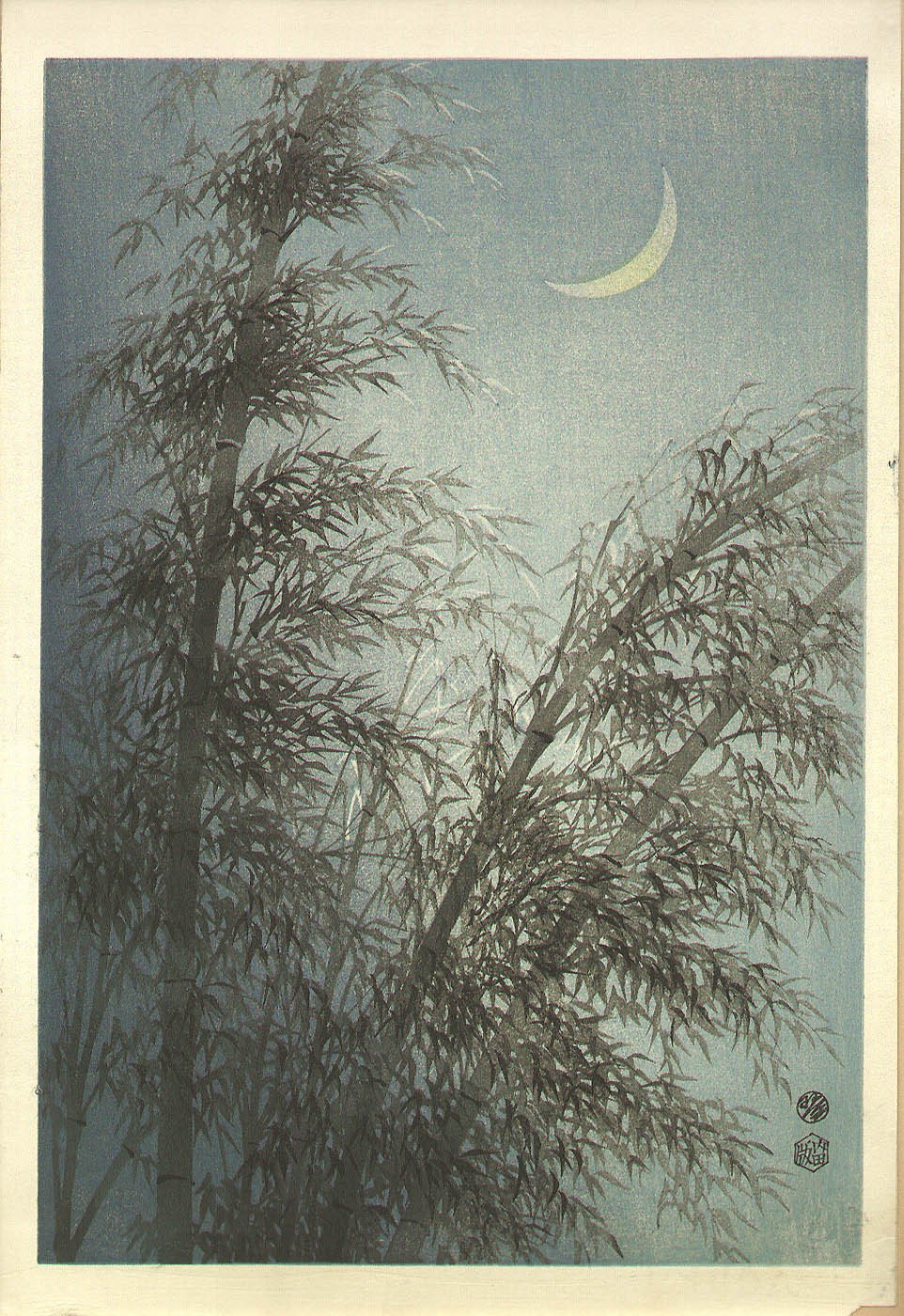【Update 2024-10-03: This is an outdated version of this article. For a more up to date version, please see: https://laspina.org/silent-moon/ 】
三日月にひしひしと物の静まりぬ
mikazuki ni hishihishi to mono no shizumarinu
At the crescent moon
the feeling
of silence
—Chiyo-ni
(Tr. David LaSpina)

(Print by Kotozuka Eiichi)
Basho taught that in order to write haiku, one had to clear their mind and become one with whatever they are writing about.
He put it this way:
Learn about the pine from the pine and the bamboo from the bamboo. The object and yourself must become one, and from that feeling of oneness issues your poetry.
Chiyo-ni really embraced this ideal. The vast majority of her haiku were about nature. She completely immersed herself in nature, and told us what she saw.
In this haiku hishihishi is an onomatopoeia that means something like "an awareness". Meditating (stopping the constant chatter of the mind), one grows aware of how quiet the surrounding world has become, especially at night, when the beauty of the moon is there to focus on.
Don't miss other great haiku in the Haiku of Japan series!
#1–10 — Haiku of Japan :: Collection #1
#11–20 — Haiku of Japan :: Collection #2
#21–30 — Haiku of Japan :: Collection #3
#31 — Am I a Butterfly or a Man?
#32 — Hidden Grey Hair
#33 — Sleeping Butterfly
#34 — Never To Grow Old
#35 — From Dog to Cat
#36 — Short Night
If you enjoyed this post, please like and resteem. Also be sure to follow me to see more from Japan everyday.
I post one photo everyday, as well as a haiku and as time allows, videos, more Japanese history, and so on. Let me know if there is anything about Japan you would like to know more about or would like to see.
 | David LaSpina is an American photographer lost in Japan, trying to capture the beauty of this country one photo at a time. |
